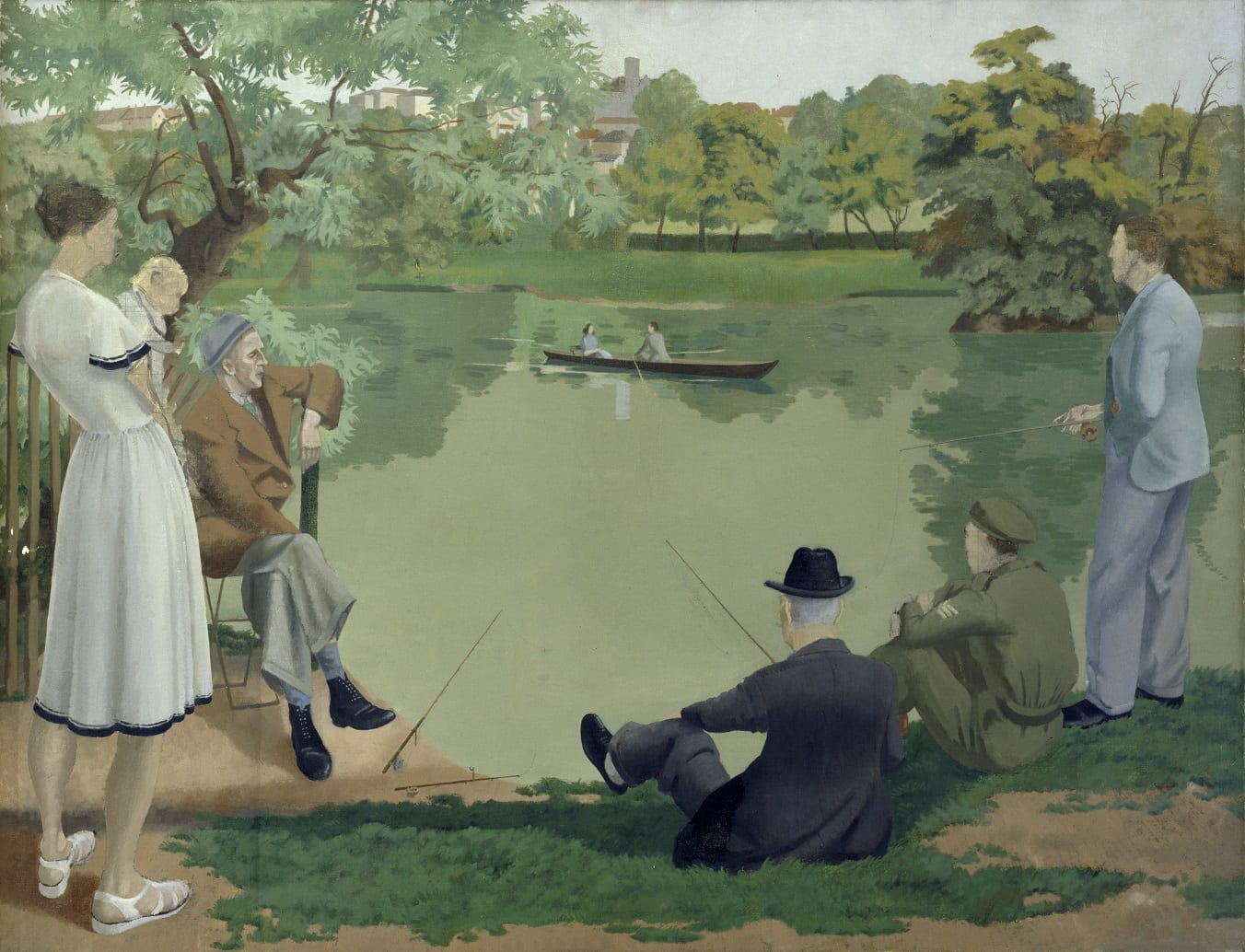Stress: Remembering Men
By Kevin Guyan, on 16 November 2015
By Kevin Guyan
In the latest blog post to accompany Stress: Approaches to the First World War, Kevin Guyan explains what James Andrew Wykeham Simons’ 1948 painting The Seven Ages of Man tells us about remembering masculinities in twentieth century Britain.
A reproduction of James Andrew Wykeham Simons’ 1948 painting, The Seven Ages of Man is currently on display as part of the Stress: Approaches to the First World War exhibition. I selected the work for inclusion as it tells us a lot about masculine identities of the past and raises particular questions about how we commemorate men lost in war, themes addressed in my PhD research.
Simons’ painting takes its name from a monologue in the William Shakespeare play As You Like It. The painting’s title invites viewers to look for Shakespeare’s seven ages of man and rethink your view towards masculinity – not as something fixed but as something continually in flux.
The youngest man found in the painting is the infant, held in the arms of his nurse. The men are looking out to a body of water where the next age of man is located, the emotional lover, whom Shakespeare describes as ‘sighing like a furnace, with a wofeful ballad made to his mistress’ eyebrow’. The turbulent years of being young and in love catches the attention of the other men in the painting.
The next stage to follow in a man’s life is the devoted soldier. Shakespeare describes this man as ‘full of strange oaths, and bearded like a pard’, which was the Old English word for leopard and highlights young men’s tendency to grow patchy beards.
On his return from war, man enters the next stage of life in which they no longer feel the need to prove themselves and can instead sit back and enjoy commenting on the world around them. We would today describe this phase as middle aged, and two characters in Simons’ painting fit this description. At this point in Shakespeare’s journey through the seven ages of man the chronology becomes less clear, as it’s of course possible to be an older soldier or a younger man who is also self-assured.
Reaching the end of one’s life, and one becomes an old man who cares little about his dress sense, wearing ‘lean and slippered pantaloon’ to cover his ‘shrunk shank’ – his thin legs. Finally, man’s life ends with ‘mere oblivion’ and is left ‘sans teeth, sans eyes, sans taste, sans everything’. Death.
I am unable to tell why Simons made one slight change in his painting from the Shakespeare monologue – he does not depict the age of the schoolboy and instead adds two, rather than one, middle aged men – the youngest in blue and the oldest in grey. My hesitant guess is that this change reflected the huge increase in life expectancy in the mid-twentieth century, with the middle decades of one’s life expanding and therefore justifying an additional character.
“Rethink your view towards masculinity – not as something fixed but as something continually in flux.”
My own research explores the relationship between masculinities, planning knowledge and domestic space in Britain between the 1941 Blitz and the early 1960s. One of the biggest changes during this period was men’s movement from old homes into new homes after the Second World War and the new opportunities men found in terms of privacy, more space, use of a garden and private bedrooms. The move into new homes made it easier for men to perform family-orientated masculinities and change what they did in the home as fathers and husbands.
In my study of postwar housing, men’s gender identity is not fixed but something that can change according to time and place. Similarly, in Simons’ painting, men’s masculine identities do not change according to space but change according to time.
The Seven Ages of Man, when viewed within the context of the First World War, raises questions about how and who we commemorate. When commemorating men who served in the First World War we need to think about their masculine identities as something unfixed that could be achieved, lost and rediscovered – there was and is no option for lifetime membership. And for millions of men in the early twentieth century, the opportunity to progress through the painting’s seven ages was viciously cut short.
It is always sad to hear when the linear path of a man’s life does not proceed through the generations as predicted – painted against the backdrop of the mid-1940s, I therefore read Simons’ painting as an anti-war statement that reminds us of the many male lives that were unnaturally disrupted by conflict. Approaching the subject of commemoration through a gender history lens raises new ways to think about men’s lives in the past and reminds us of the need to stop history from repeating itself.
 Close
Close







